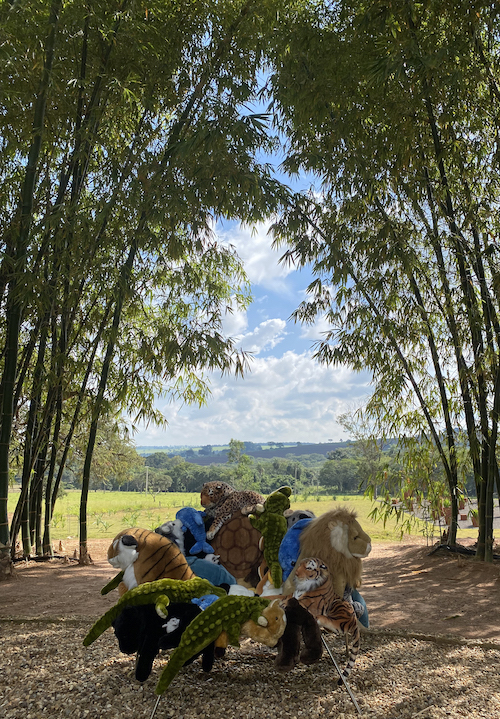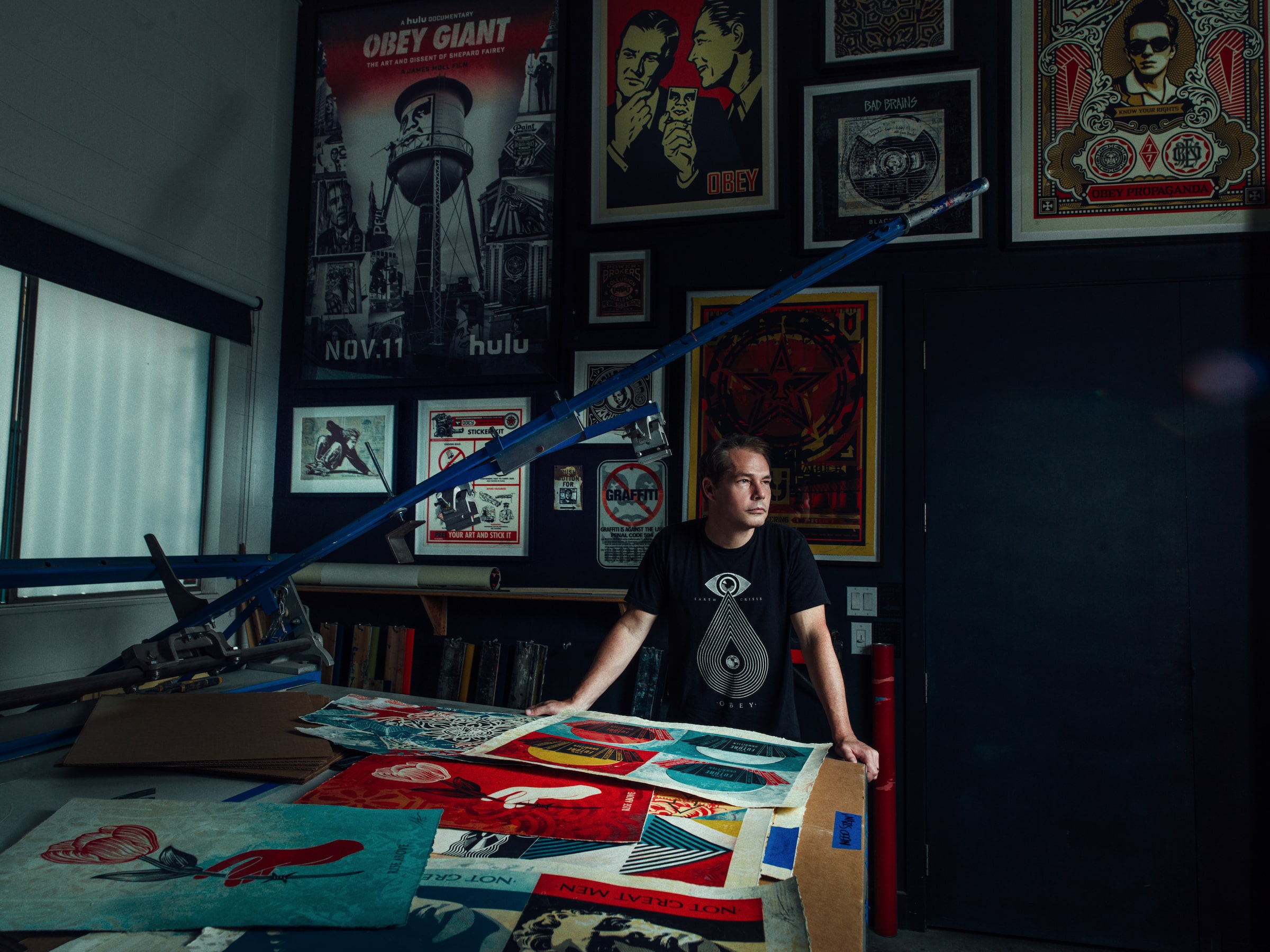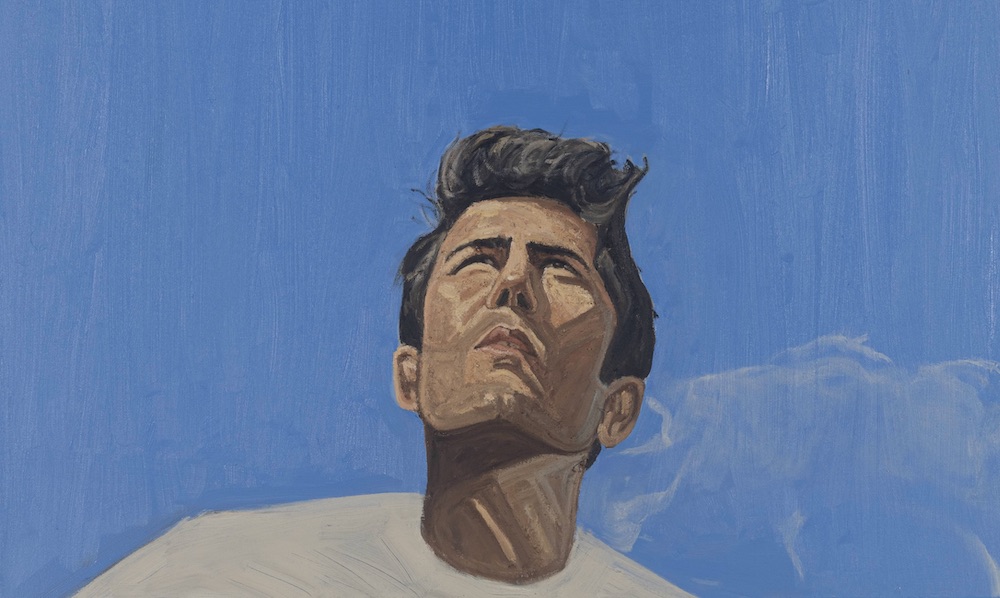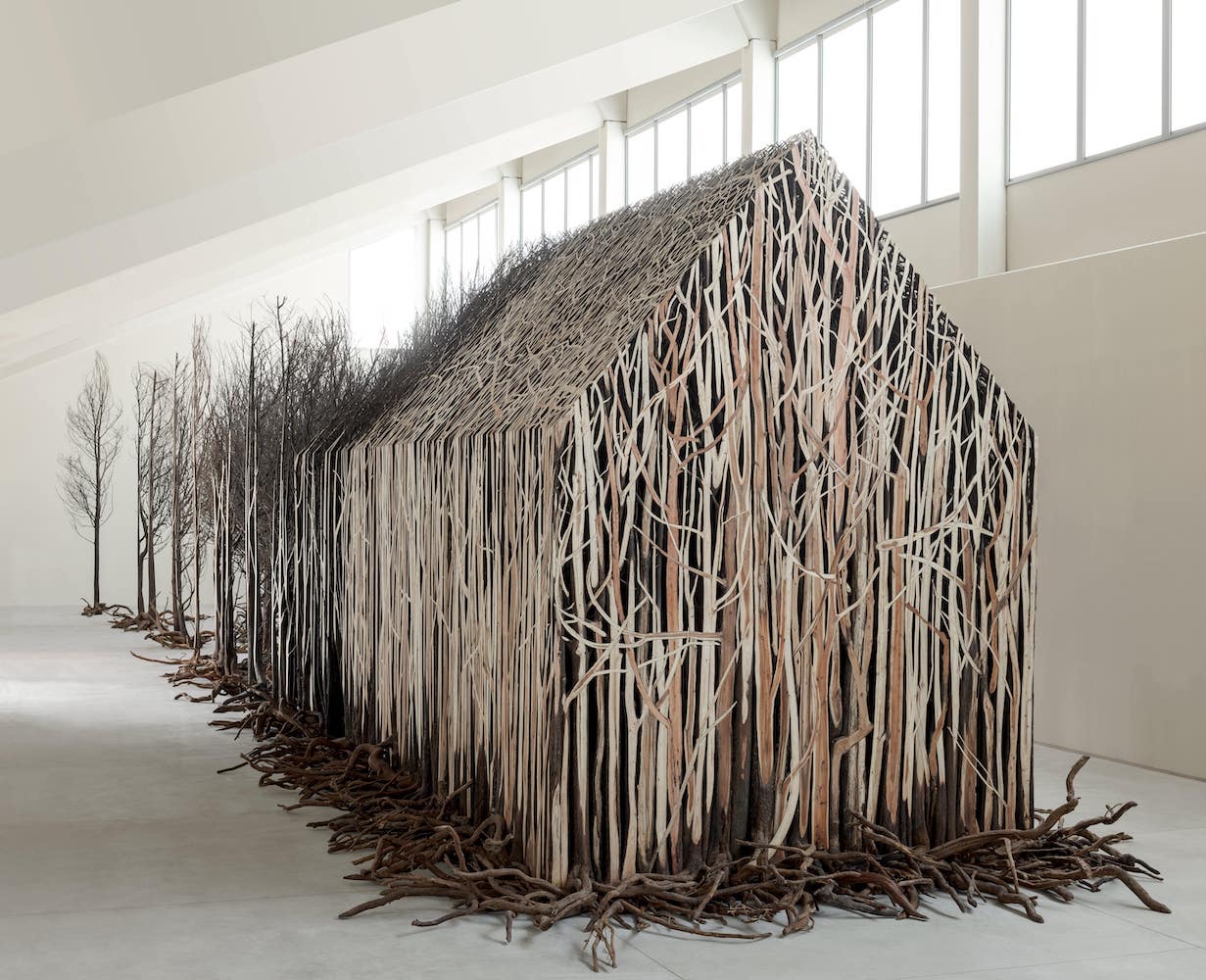Humberto and Fernando Campana grew up in Brotas, Brazil, dreaming of the worlds they encountered on the silver screen. In their small, conservative hometown, they found sustenance and excitement from their local movie theater, where they consumed movies by Fellini, Pasolini, and Kubrick with a great hunger. They would spend their days re-creating sets in their backyard from whatever they could find—bamboo, branches, toys, even a spaceship from cactus. That play in transforming everyday materials into something beautiful, even magical, eventually became the basis for their design studio practice, which celebrates its 40th anniversary this year.
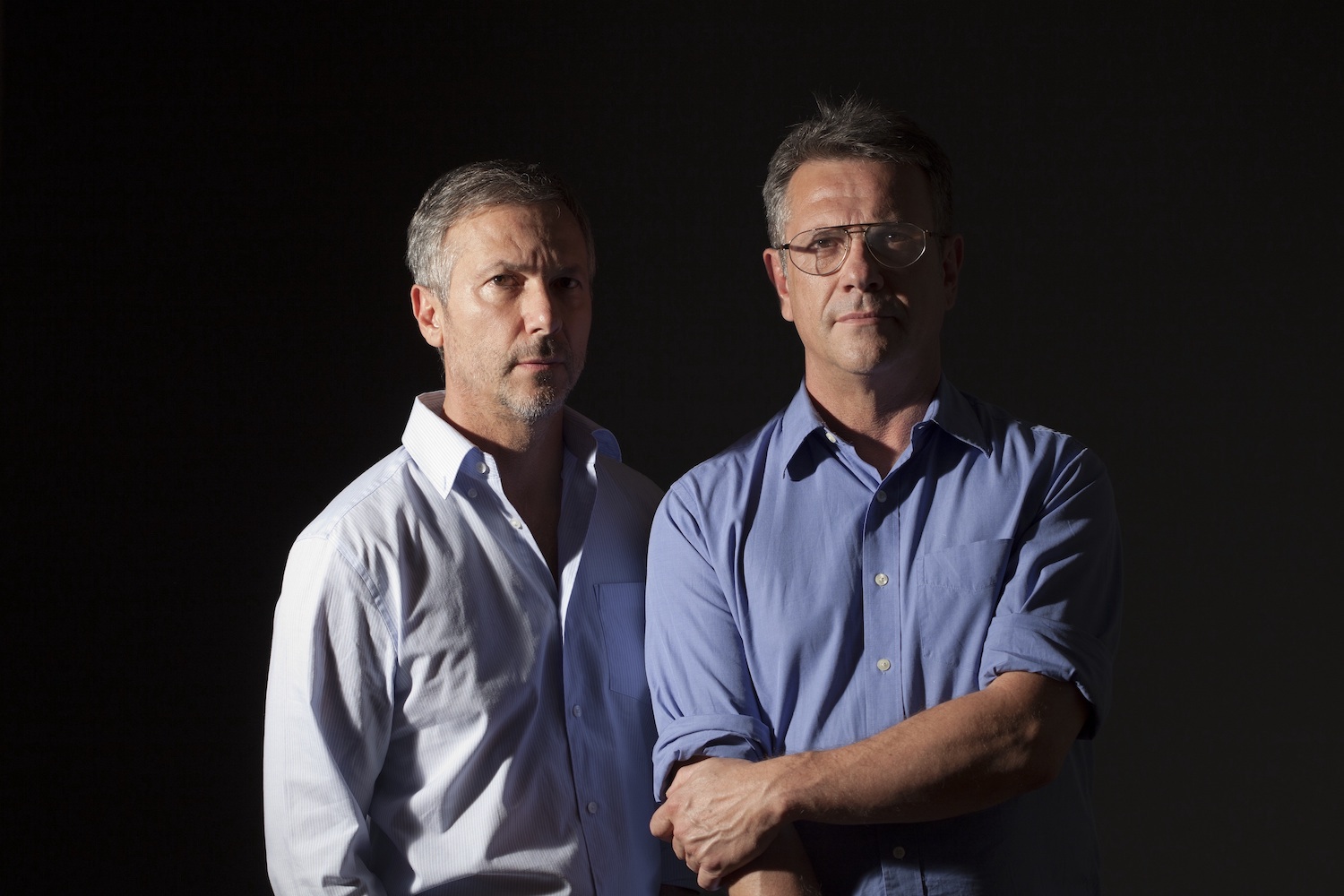
Humberto and Fernando Campana, photo by Fernando Laszlo, courtesy of Friedman Benda and Estudio Campana.
The inspiration of cinema serves as the starting point for Estudio Campana’s current exhibition, at Friedman Benda in (fittingly) Los Angeles. In “Cine São José,” a range of furniture pieces are on view, from their first “Uncomfortable” collection in the late eighties to more recent explorations in Styrofoam. It pays homage to the impact the Campanas have had on the design industry, as it honors the legacy of the late Fernando, who passed last November.
As Humberto shared with Whitewall early this year, at the heart of their work has been a desire to share love and hope, and bring dignity—whether that be to humble objects or the people of Brazil. Through Instituto Campana, for nearly 20 years they’ve given workshops and worked with artisans to preserve craft and cultural knowledge, and inspire change. Humberto spoke of his strong belief in design’s transformative power, his spiritual connection to his brother, and how his work on the new Parque Campana has been a safe haven.
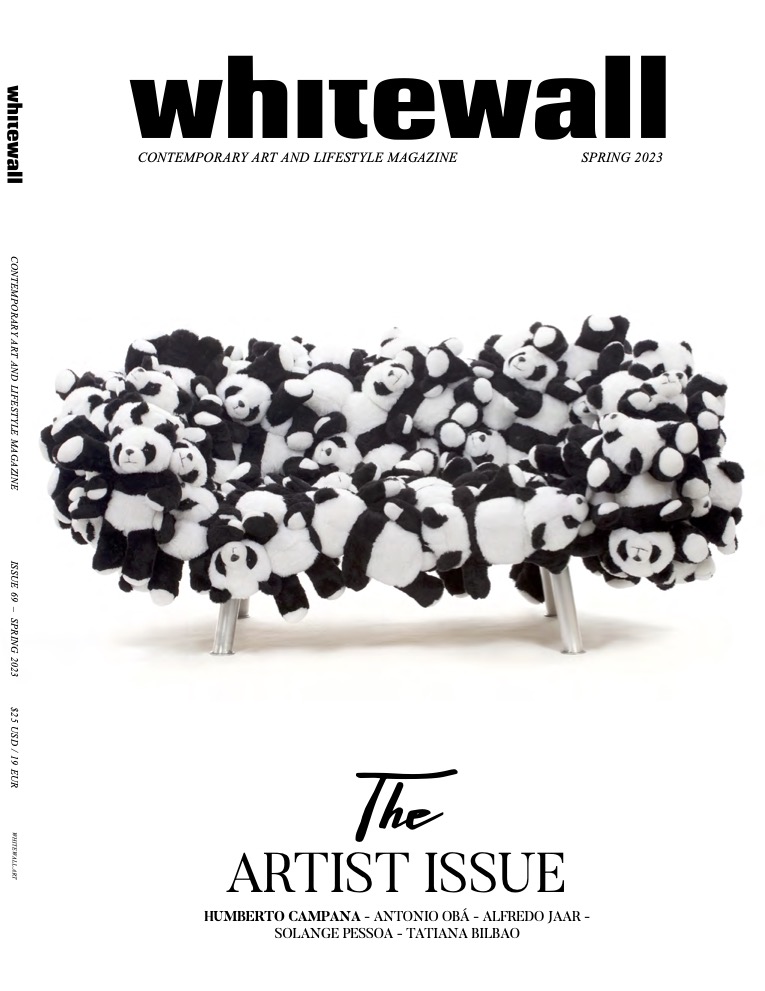
Photo by Fernando Laszlo, courtesy of Estudio Campana.
WHITEWALL: Let’s start with your show at Friedman Benda in Los Angeles, “Cine São José.” How has film shaped your creativity?
HUMBERTO CAMPANA: I love the title, Cine São José, because it was the name of the theater in our hometown. The town where we grew up was very small, around five thousand inhabitants. It was very conservative, very Christian, it was difficult. So me and Fernando, we used to go to the movie theater. The owner was an Italian. He brought Pasolini, Fellini, Ben-Hur, Kubrick, all the westerns, Tarzan—and we loved it.
I went every night to the movie theater. And then the next day, we went to our backyard to construct scenery of the movies that we saw. We would construct houses in the trees with bamboo, cactus. We made spaceships out of cactus, because we saw 2001: A Space Odyssey. We tried to create our own universe inside that conservative place where I didn’t fit myself. Never. But, at that same time, it was our treasure, to be born there, because it made us creative and brought us a kind of agility, mental agility to transform things.
This exhibition in L.A. brings all these elements of dreams, Surrealism, oneiric, all the fantasies of own history.
WW: And transforming material would go on to be a pillar of the studio practice.
HC: Yes. This is the challenge that drives us to create. I love to transform things to bring dignity, give elegance to very simple banalities, poor materials, materials that can be reused. This is the DNA of Campana, the art of transformation. We transform something very banal like Styrofoam into something elegant that creates an impact.
The process of manufacturing is like tailoring. They are all handmade with passion, with love, affection. I want to bring all these elements in my work—love, affection, because we need this. Why work with plush chairs? All kids have a teddy bear. It’s memories of affection. What I want to bring is a sign of hope and love, not hate.
WW: You mentioned Styrofoam, which you’ve explored more recently. What’s it like to work with that material?
HC: Our former studio was based in downtown São Paulo near an area where lots of places sold TV sets and computers. At the end of the day, they’d throw away the packaging Styrofoam. I loved the shapes they created. So it was an exercise. I gathered it in the streets and brought it to the studio and created a mold for them. I transformed them into something very rigid in order for it not to be destroyed.
And the process is a handmade process. Covering the Styrofoam with leather and stitching is an exercise of tailoring. It’s all handmade. I like idea of creating a fake diamond—something that looks bronze or metal, but it’s not. It’s Styrofoam.
I feel very comfortable to work like this. I’m connected to what is happening in the planet. Since the beginning of our career, we were concerned about working with humble materials, reusing, and bringing the language of humanity, love, and affection. It’s not a piece that you throw away after one year. It’s a piece that will remain in people’s homes, passed through the family. I don’t want to create more waste. And at the same time, I’m contaminating other creators, young creators to go in the same direction.
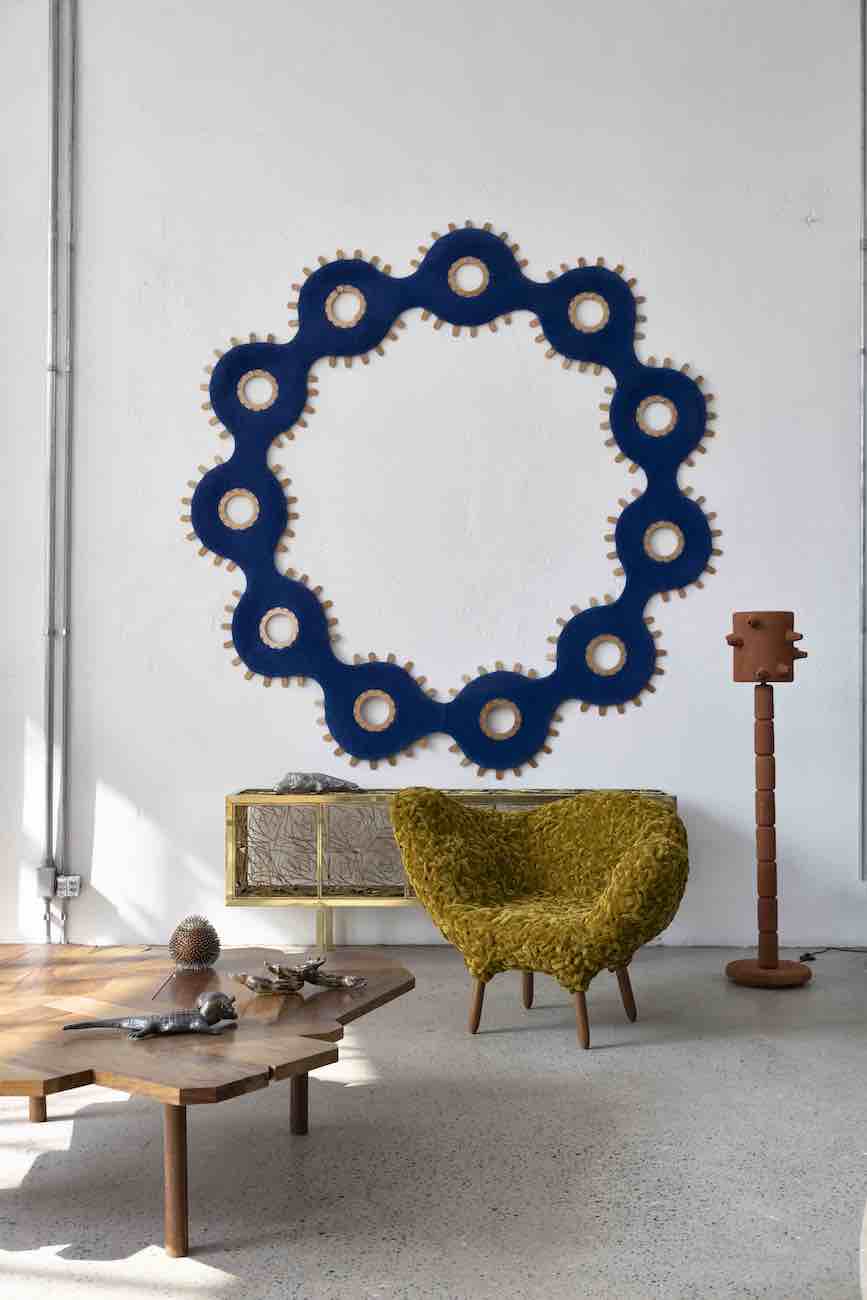
Fernando and Humberto Campana, Collana rug for Nodus, Fitas buffet, João de Barro floorlamp, Aracnideo armchair, Nazareth centerpiece for Bernardaud, Taboão table, Ouriço mate, Untitled sculpture by Fernando Campana, photo by Ruy Teixeira, courtesy of Estudio Campana.
WW: Last winter, you had a show at Luciana Brito Galeria, “Polifonia Campana,” which you described as a homecoming of sorts, a return to where you were born and the prevalent material there of clay. What was it like to work with clay, and had you before?
HC: I was a lawyer. But I gave up law and I told myself, “I’m going to construct my life with my hands.” I started with crafts, very kitsch objects, because I never studied arts or design. So working with my hands, I started learning, watching, and the first course that I took was clay sculpture. I had clay sculptures in the seventies that I created. But then I moved in another direction to other materials.
And last year we were invited to take over the modernist gallery here in São Paulo, designed by Rino Levi with landscaping by Burle Marx. It was fantastic. We brought all the elements of our beginning, like clay. And at the same time, unconsciously, we were looking for sacred things that had a spiritual meaning. We were looking for the divine, the essential of things. It was interesting because it had pieces of myself as Humberto Campana, and pieces of my brother, Fernando Campana.
And it was a rite of passage. Because one day before the opening of the show, my brother passed away. Things happen in our lives like this. Magic. Because it is beautiful that we said goodbye to each other with our exhibition together. It has a spiritual meaning, all this. Without knowing that he was going to say goodbye, we created things that discussed divine, the sacred, the spirituality.
WW: That can’t be a coincidence.
HC: No. The connection with me and Fernando, it was written in some place. It was two brothers that loved each other and created stories together for 40 years of collaboration. We never expected to be designers. I was a lawyer, he was an architect.
WW: I am so sorry for your loss. And I so appreciate you sharing this with me.
It’s wonderful, too, that with Instituto Campana, you get to carry on that legacy of connection, love, transformation, and hope.
HC: For almost 20 years we gave workshops around the world. The idea to create the Instituto was that design can improve people’s lives. Design can change people’s lives. Like myself. I try to put my story, whenever I give a workshop, I share my experience—going from nothing to working with hands. And from love, humanity, passion, affection, transforming things, giving elegance to humble materials.
I come from a country that is not wealthy. Not Germany or Japan or U.S.A. with high technology. We are a country that is still growing. And I want to bring all this with dignity. Give dignity. Situations of people that are living very difficult situations, I try to give examples, hope, to bring them in this part of our history. Because design can transform people’s lives.
In the year of 2000, we created a series of chairs with plush chairs. And one of the chairs we bought some dolls from a community in the northeast of Brazil. We created upholstery with these dolls. And one year later, this community told us, “You changed our lives.” The chair was in the media in Brazil and their production increased. We realized, this can change people’s lives! With this, we created Instituto to also to preserve our memory and educate people.
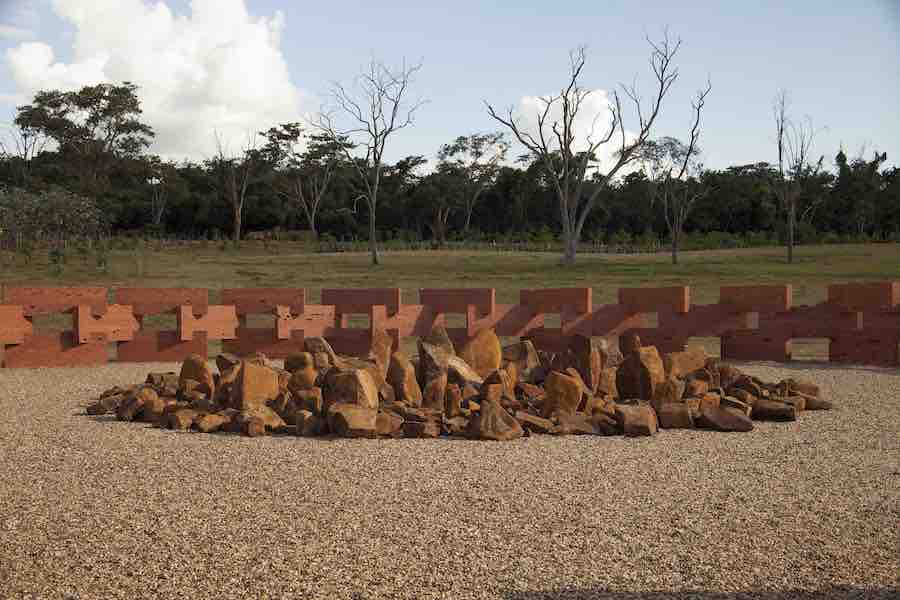
Parque Campana, photo by Fernando Laszlo, courtesy of Friedman Benda & Estudio Campana.
WW: And how did you come up with the idea of Parque Campana, a park of pavilions you’ve designed in Brotas?
HC: We are creating this park in our hometown in order to educate people. To bring people and kids. It’s a place of healing with beauty, observation, contemplation. The idea is to create pavilions like temples. The area is completely a desert of agro-business, sugarcane, so we planted two thousand native trees in this area. We are working with a group of biologists from São Paulo University to construct a prototype of the original vegetation. We want to create a small school of crafts. In the area, there is a tradition of bamboo weaving, bamboo baskets, working with leather, so I want to preserve all these traditions.
Most of the pavilions are made out of plants—cactus, bamboo, agave, straw, eucalyptus, all the elements of the area without bringing other elements. We are working with rocks. I gather rocks in the fields and bring them. The idea is to work with the elements there.
WW: How long have you been working on this?
HC: Since the pandemic. It was a kind of healing for myself. Before the pandemic, everybody lived a nomadic life. I was used to traveling two or three times outside of Brazil a month. I never stopped. And since my family passed away, I kind of forgot my hometown. We inherited a piece of land there, which I rented for cattle, and it was abandoned. During the pandemic, I stayed in my house here in São Paulo, and then I started going there, planting trees. Since the studio was closed, I could not create objects—why not plant trees and create pavilions?
I had a dream that I needed to construct 12 pavilions there. Because I’m Italian, I want to bring a connection between the Etruscan 12 cities. It’s to make a bridge with Italy and my hometown.
WW: What’s it like to see it come to life, this dream you had?
HC: It’s my dream future. My heritage. Now it’s time to give back to my country. I’m very lucky to have money to construct all these things in a country like Brazil with lots of social differences. There’s a huge gap between the wealthy and the poor. It’s a way to give to my country. I’m a very lucky person to have this kind of life, the opportunity to show my work around the places.
WW: Has working at this scale or with local plants found its way back to what you’re thinking about doing in the studio?
HC: It’s all the same. I don’t see Instituto, Estudio, it’s just one thing. I go to give the workshops, I love this. I’m 70 years old. And I refuse to get old mentally. So I want to get out of my comfort zone. I’m a very active person. I don’t like to stay in the studio. I like to do things. I love to work with artisans in order to learn the process. I love the process behind the final objects. Whenever I’m creating or thinking about the pavilions growing, it’s healing, like a therapy, I feel safe.
I have a problem of sleeping. In order to get calm, I think about the trees that I planted. They are growing. Those simple things maintain me.


